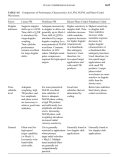by78
General
Is this new cause I see some people mentioning that it was from last year
You're right. It is in fact an old image. Post amended. Thank you.
Is this new cause I see some people mentioning that it was from last year
Can someone else good at computer science verify my understanding of how AESA seekers defeat EW countermeasures?
- AESA radar can emit on multiple frequencies
- Jamming intends to confuse seekers by overpowering returns with noise
But here lies the problem.
- The seeker can emit on a randomized sequence of frequencies (potentially multiple frequencies simultaneously) which is virtually impossible to predict

This is great. I didn't expect such a technical answer. My question for you follows.1. Yes but not all at once, you cant arbitrarily change frequency without also resetting the phase shifters used in your TRM. Considering current TRM are using phase shifters instead of True Time Delay in beamsteering, there is squinting phenomenon where your beam will mispoint if frequencies are changed without first resetting the phase shifters, you may cover some frequencies in your seeker. This called "Instanteneous bandwidth" Or the amount of frequency you can use at a time. It's denoted in percentage. For phased array radar using phase shift for beamsteering the instanteneous bandwidth is equal to beamwidth.
You can calculate beamwidth by simple equation of k*lambda/D where Lambda is wavelength, D is diameter and k is tapering factor which usually taken as 1.25 (For Taylor -40 dB). Thus for say X-band seeker with diameter of 20 cm, the beamwidth is 0.1875 Radians or 10.7 Degrees. Thus your instanteneous bandwidth is 10.7% If the highest frequency (Which is taken as the basis of your antenna element spacings) Your seeker can use 9.7-10.7 GHz bandwidth at one time before need to reset phase shifters. Resetting phase shifters tho is relatively fast, in at most miliseconds but in terms of waveform it can be a limitation if High PRF waveform is desired.
2. Noise is not the only technique available to defeat radar, particularly radar seekers you might find it rare for opponent to use noise jammer. Instead it would use deception jammer e.g Cross Eye preceeded with both RGPO and VGPO (Range-Velocity Gate Pull Off) Or other technique.
Not entirely random, unlike communication which such technique might be used which termed "DSSS" or Diverse Spread Spectrum Signal. Radar is different, especially if you want to use Doppler technique to determine target velocity or even using it to separate target from Clutter. Such are termed Coherency or Coherent transmission. This put a cap on what frequency and PRF (Pulse Repetition Frequency) one can use. You need to transmit some sequence of frequency in a pulse train before changing frequency to other pulse train (pulse train not pulse-to pulse, you cant randomly change frequencies for every pulses you transmit) This sequence is then stored in Radar's Receiver as reference to compare and measure doppler shift coming from the reflections. Thus it cannot be truly random otherwise you lose Coherence and how one can use the doppler effect that way ? You cannot differentiate clutter from target.
The best one can use is Pseudorandom noise technique. There is of course some limitations mainly on doppler effect as to use this technique the pulse will have to be modulated mainly in Phase. This is some comparison of modulation techniques and their limitations :
View attachment 152529
If you are picking or engaging target below Mach 1, you have more options. If you engage Hypersonics.. LFM is probably the only practical way.
What is status of ZDK-03 awacs?What if this is just upgraded ZDK-03, supposedly they were sent back for MLU
A conundrum wrapped in an enigma... No one knows where they have gone. Some say they've been flown back to China for MLU other says ZDK-03s were retired.What is status of ZDK-03 awacs?
What is status of ZDK-03 awacs?
Aren't these just Y-9s?KJ-500 assembly line
View attachment 152563
